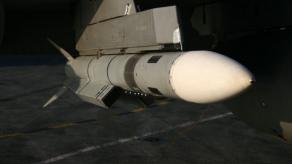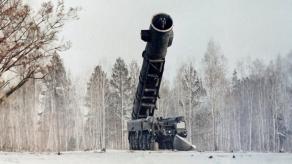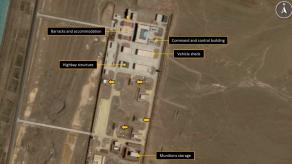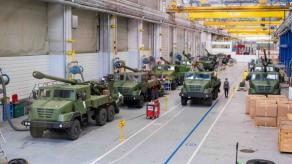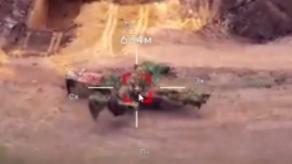Israel's Operation Rising Lion, involving strikes against iran, goes far beyond merely targeting nuclear facilities or eliminating leaders of the nuclear program. The IDF officially announced that it had succeeded in disabling iran’s air defense system — a development of far greater significance.
צה״ל השלים מהלומה נרחבת נגד מערך ההגנה האווירית של המשטר האיראני במערב איראןבשעות האחרונות, מטוסי קרב של חיל האוויר, בהכוונה מודיעינית מדויקת של אגף המודיעין, השלימו תקיפה נרחבת נגד מערך ההגנה האווירית של המשטר האיראני במערב איראן.במסגרת התקיפות הושמדו עשרות מכ״מים ומשגרי… pic.twitter.com/1DupJPWhcq — צבא ההגנה לישראל (@idfonline) June 13, 2025
Technically, Israel’s Air Force has already demonstrated its ability to carry out precision strikes deep inside iran before. For example, back in late October 2024, when Israeli forces used long-range air-launched ballistic missiles such as the Rocks and Air Lora. At that time, as Israel was operating through Iraqi airspace, a number of missile-related facilities were struck at distances of up to 550 kilometers into the iranian territory.
This time, however, the IDF targeted iranian air defense network and claimed destruction of dozens of radar stations and SAM launchers in western iran during a massive attack, which has "improved the Air Force's freedom of aerial action."
A published video shows a strike on a Raad surface-to-air missile system — a medium-range air defense weapon based on the Buk-M2, developed with direct russian assistance and manufactured in iran. At first glance, this may seem like a secondary achievement compared to pinpoint strikes on deeply buried and heavily protected nuclear sites.
BREAKING: Fire visible at the nuclear facilities area in Natanz, Iran following Israeli airstrikes. pic.twitter.com/EWVr5VbJSJ — Clash Report (@clashreport) June 13, 2025
However, it’s actually quite the opposite. Without an air defense system, iran is unable to protect its critical military assets. And Israel is approaching the possibility of gaining air superiority over iranian skies — allowing it to strike targets using ordinary free-falling munitions rather than expensive air-launched ballistic missiles at standoff range.
The destruction of iran’s air defense network opens the door to methodical elimination of its military-industrial complex, in contrast to isolated strikes. Moreover, it allows to potentially hunt down iranian ballistic missile launchers and other long-range strike systems — something the IDF is already demonstrating.
חיל האוויר השמיד טילים בליסטיים שכוונו למדינת ישראל pic.twitter.com/eGqiEBkJcp — צבא ההגנה לישראל (@idfonline) June 13, 2025
If you look at photos and videos of the aircraft involved in the strikes on iran, you can notice they are equipped with precision-guided bombs. The use of such bombs requires either close proximity to the target — in the case of glide bombs like the SDB — or flying directly over the target, as with JDAMs.
תיעודים חדשים מפעילות חיל האוויר במסגרת מבצע ״עם כלביא״ pic.twitter.com/8a8e6OYQcQ — צבא ההגנה לישראל (@idfonline) June 13, 2025
And clearly, this was a very large-scale air operation. According to the IDF, 200 fighter jets were involved. Meanwhile, the total number of fighter aircraft in the Israeli Air Force is 310, with 260 being multirole fighters. These aircraft operated at ranges of over 1,000 km, evidently with the significant involvement of aerial refueling tankers provided by partners.
Read more: Testing Begins for New Viper Shield EW System for F-16V, Poised to Act as "Electronic Shield" in the Sky






